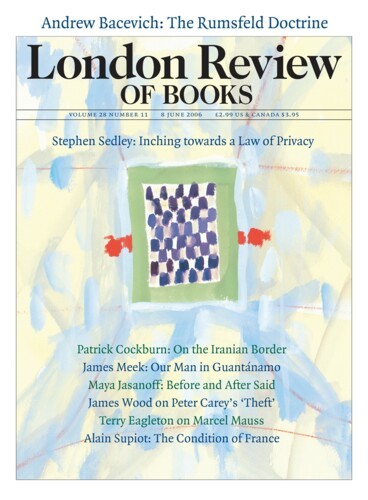Despite everything Auden said, there are plenty of works by Old Masters, even at the Musée des Beaux Arts in Brussels, in which suffering and death take centre stage, in which the drama is concentrated, the tragedy given nobility, the idle crowd banished and the bystanders made to pay attention.
Crucifixions and bloody martyrdoms hang so thick on gallery and church walls that one can forget the demands these inescapable Christian subjects made on painters. If the figures of Christ and martyrs are too noble and elegant the horror of torture is muffled and the effect of the image, its power as an object of devotion, is diluted. If, on the other hand, the detail is unflinching, the metaphor by which beauty of body stands for beauty of spirit fails. Painters in both the north and the south of Europe, from the 1400s through to the 1600s, followed different but intertwined paths in their effort to marry the sweet and the bitter. There are some common shifts in style: a general move from light, spare, vulnerable male bodies to more solid, well-muscled ones. But there are strong regional accents too; the change of body type is seen more clearly in the south and the benign pathos of poses in Giovanni Bellini differ as markedly from the harsher angularity of Rogier van der Weyden as the sound of Dutch does from the sound of Italian.
A remarkable exhibition to be seen in the Scuderie del Quirinale in Rome until 25 June gathers together work by Antonello da Messina, and by contemporaries he influenced. It shows a confluence, a meeting of the ways, a moment when northern visual achievement was naturalised in Italy and then transformed. In one Antonello Crucifixion there are Audenesque goings-on under the three crosses – a troop of men in armour trots off into the distance, an owl finds an unlikely perch among skulls scattered on the ground – but there are also devotional pictures with no accidents of this sort to distract you from Christ’s gaze.
Antonello was born in Sicily around 1430 and died there in 1479. He seems to have been trained in Naples. He may have travelled in northern Europe and he certainly worked in Venice in the 1470s. It is not clear just where, and from whom, he learned to paint in the manner of Jan van Eyck, using oil paint laid on in transparent layers which give a depth and brilliance unavailable in other media. It was not a technique that could have been easily picked up by inspecting finished works. The pieces in the exhibition which are most striking and which set Antonello apart are a group of small portraits and another of devotional paintings – also small. The painting that opens the exhibition, the National Gallery Saint Jerome in His Study is wonderful, but so like a Flemish picture you would not quickly guess its Italian origins. The portraits are a different matter.
These are modern faces. Astonishingly so. Or rather they have modern expressions; or expressions that seem modern because we are not used to the kind of thing you find in some of Antonello’s male portraits – the lift of an eyebrow, the pucker of a mouth – being recorded so early. A couple of hundred years before Frans Hals and Quentin de La Tour began to catch smiles in direct marks in paint and pastel Antonello was doing it in a finical small-brush style that gives every eyelash, every whisker its mark. His control was remarkable; as you move away from the picture and the crisp little strokes are no longer distinguishable, the effect softens, the sense of a human presence increases. Sometimes in his earlier portraits the smile is a bit forced, even cheeky. Antonello’s portraits influenced Bellini, but the half-smile and raised eyebrow don’t seem to have suited Venetian talents and clients. Later, Leonardo invented a superior inward-looking version, but his smiles (unlike Antonello’s) don’t have much to do with fun.
The portraits bring you close to the subjects; they are public statements of appearance. The devotional pictures were private, made to assist private prayer. There are several versions of an Ecce Homo – the one from New York is the most affecting. Christ is shown as a man who has been beaten up, the facial type as well as the expression is one you see in news pictures from the Middle East. The beard is thin and fluffy, the eyebrows are raised in a puzzled inverted V, the mouth is half open. The expression registers disquiet as well as pain.
Pictures like this that were means are now treated as ends. In exhibitions it is hard to get a feeling of the way they originally functioned. In the case of Antonello, a knack for making people seem modern, human and accessible makes it easier. An Annunciation, in which Mary, God’s messenger having departed, casts a modest eye downward has been used to publicise the exhibition. She appears on posters in Rome, more modest than girls selling worldly goods, but remarkably similar in facial type. None of the pictures in the exhibition by Antonello’s contemporaries shares this surprising directness. Nor does Antonello’s own Saint Sebastian from Dresden. Newly cleaned into shocking brilliance, the saint stands, loosely tied to a tree that grows rather improbably from a tiled pavement. Sebastian’s solid young body, neat drawers, well-combed hair and untroubled face are all decorative enough, as is the Venetian setting. But those arrows should surely bring a little anguish. Maybe it was all part of the miracle; but then I looked him up and found that Sebastian recovered from the arrow wounds and was beaten to death only after he had insisted on preaching to the Emperor Diocletian.
Send Letters To:
The Editor
London Review of Books,
28 Little Russell Street
London, WC1A 2HN
letters@lrb.co.uk
Please include name, address, and a telephone number.

